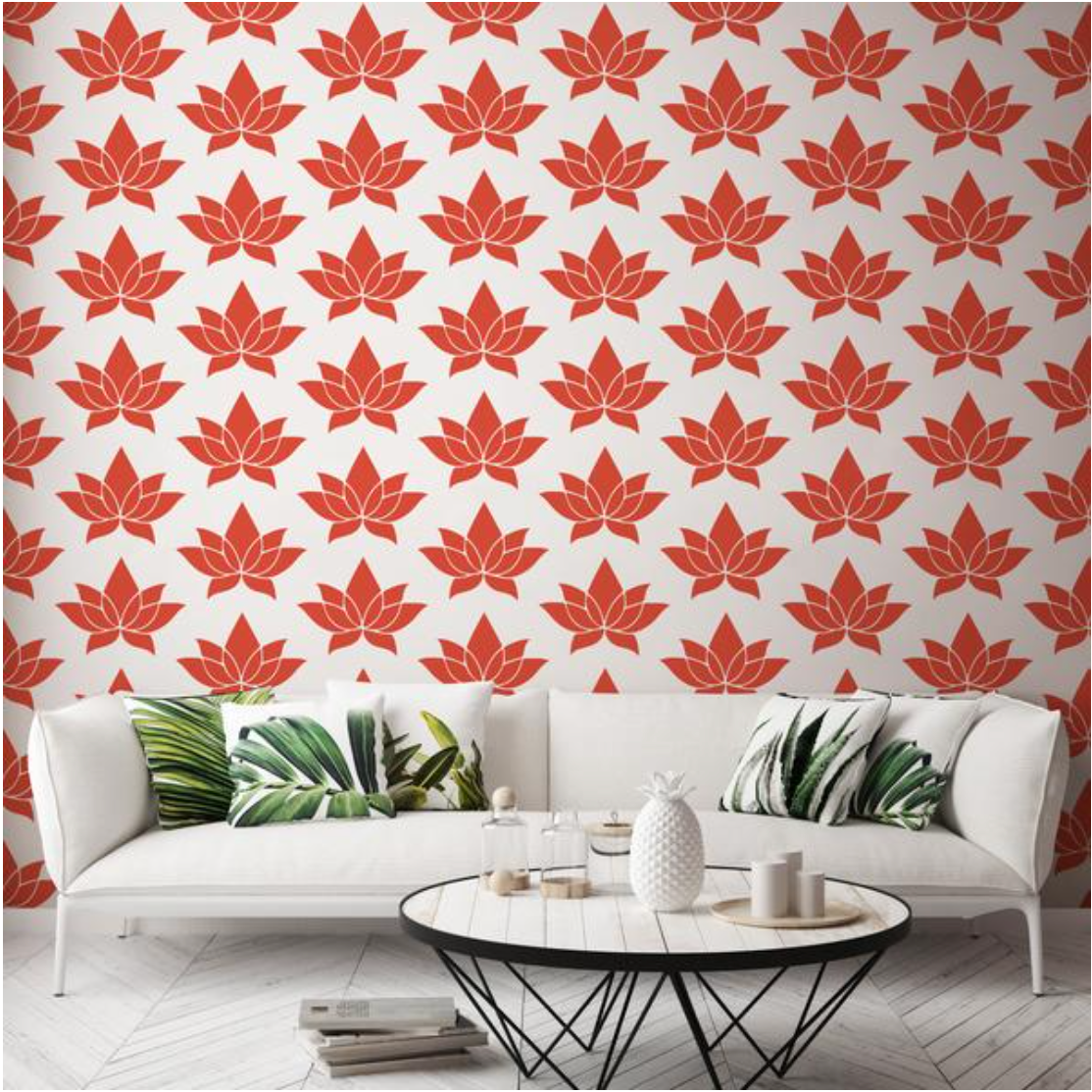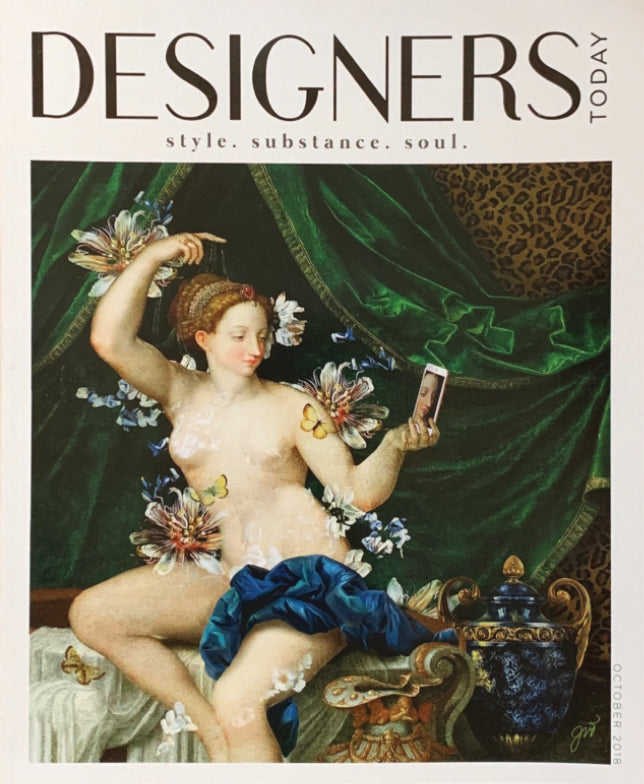Can You Put Wallpaper on Textured Walls?

Wallpaper adds character and dimension to any room. It can completely transform the look and feel of your interior spaces, and with the incredible variety of patterns, colors, and textures to choose from, there’s a wallpaper to suit any style. But can you put wallpaper on textured walls? The answer depends on the type of wallpaper, the amount of wall texture, and how you prepare your walls prior to application.
In general, the smoother the wall, the easier it is to apply wallpaper – and the better it will look. However, textured walls don’t mean you can’t have wallpaper. Most traditional wallpapers will stick to walls with a limited amount of texture. You can also smooth out wall texture in order to make application easier.
Types of Textured Walls
Most textured walls are designed to hide imperfections, absorb sound, and add visual flair. There are several types of wall texture, each achieved using a different method and offering a unique appearance.
Popular types of textured walls include:
- Orange peel: Offers a rustic, yet simple visible texture that resembles the surface of an orange peel
- Popcorn: Creates a pronounced, popcorn-like bumpy texture that’s especially effective at absorbing sound
- Knockdown: A more subtle, flatter texture that adds a soft and natural vibe to a space
- Slap brush: Characterized by irregular grooves that can add visual depth and interest while concealing imperfections
- Sand swirl: Offers subtle sweeping patterns to absorb sound, deter moisture, and provide visual appeal
- Venetian plaster: An upscale, modern texture that appears elegant while offering moisture resistance and durability
Tips for Choosing a Wallpaper for Textured Walls
Choose the Pattern Carefully
Texture is less noticeable under wallpapers with patterns that have more irregularity and color variation. Repeating, uniform patterns like the dashing jet black geometric wallpaper by Mrs. Paranjape are modern and sleek, but they’re more likely to show texture.
More intricate designs like the floral bird toile black wallpaper or the marble drift wall mural tend to cover texture more effectively.
Avoid Peel and Stick Wallpaper
Removable peel and stick wallpaper has grown in popularity for a reason.
These wallpapers are great for renters who want to add design intrigue to their spaces without damaging walls, or for anyone who loves to change up the look of their home more frequently. However, while peel and stick wallpaper can work with very light texture, these papers tend not to adhere as effectively to surfaces with lots of texture.
Opt for a Thicker, Textured Wallpaper
Textured wallpapers such as grasscloth and vinyl are great for disguising underlying wall texture. Grasscloth wallpapers like the titanium iridescent loose weave grasscloth wallpaper or the areca palm pale sun grasscloth are excellent for this purpose, and infuse natural elegance into your space.
Vinyl wallpapers are also a great choice for textured walls, because they tend to be thicker and more durable than other types. They’re also often easier to clean.
Test the Wallpaper Before Making a Final Decision
It’s often helpful to try wallpapering a small section of your room before committing to a final design. This is true for any room, but it’s especially important if you have textured walls or you’re unsure how well your wallpaper may adhere to your wall surfaces.
It’s a good idea to choose a small, hidden area for a wallpaper test, like a corner behind an armchair or bookcase, before making your final selection.
Consider Working With a Professional
Not sure where to start when choosing a wallpaper for your textured walls? Sometimes, hiring a professional interior designer or wallpaper expert can help make selecting the right pattern and type of wallpaper much easier, and help ensure you love the final result.
At Mitchell Black, we offer a concierge service to all our customers. If you have questions or need help choosing the right wallpaper for your home, book a complimentary session and we’ll guide you through everything you need to know.
You may also want to hire professional installers, especially if you’re working with particularly textured walls and applying grasscloth or another type of specialty wallpaper.
Should You Smooth Textured Walls Before You Apply Wallpaper?
It isn’t always necessary to smooth textured walls before wallpapering. But it can help your wallpaper stick and improve its appearance and durability, especially if you’re dealing with a lot of texture.
The most common way to smooth wall texture before applying wallpaper is to apply a pre-mixed joint compound or skim coat. This flattens the wall surface and improves adhesion. The process involves some prep work and using a drywall knife to spread the coating, then waiting for it to dry before lightly sanding uneven areas. You may also want to prime your walls before applying wallpaper.
Another option for lightly textured walls is simply to sand down the texture using a power sander. But before sanding, you may want to test your walls for the presence of asbestos and lead if you have an older home. Sanding textured walls releases small particles into the air that can be hazardous to your health when inhaled.
Enhance Your Space With Beautiful Patterned Wallpaper
Installing a unique wallpaper is one of the best ways to achieve your design goals and add a touch of intrigue to your space. Whether your personal style is more modern, traditional, eclectic, or minimalistic, a high-quality wallpaper can bring your interior design to life.
At Mitchell Black, we carry an extensive range of diverse wallpaper patterns to suit your needs and preferences. We offer wallpapers in removable peel and stick, premium paper, type II vinyl, and textured grasscloth varieties.
Not sure what you're looking for? Book a complimentary consultation to get personalized advice from one of our design experts.









Leave a comment